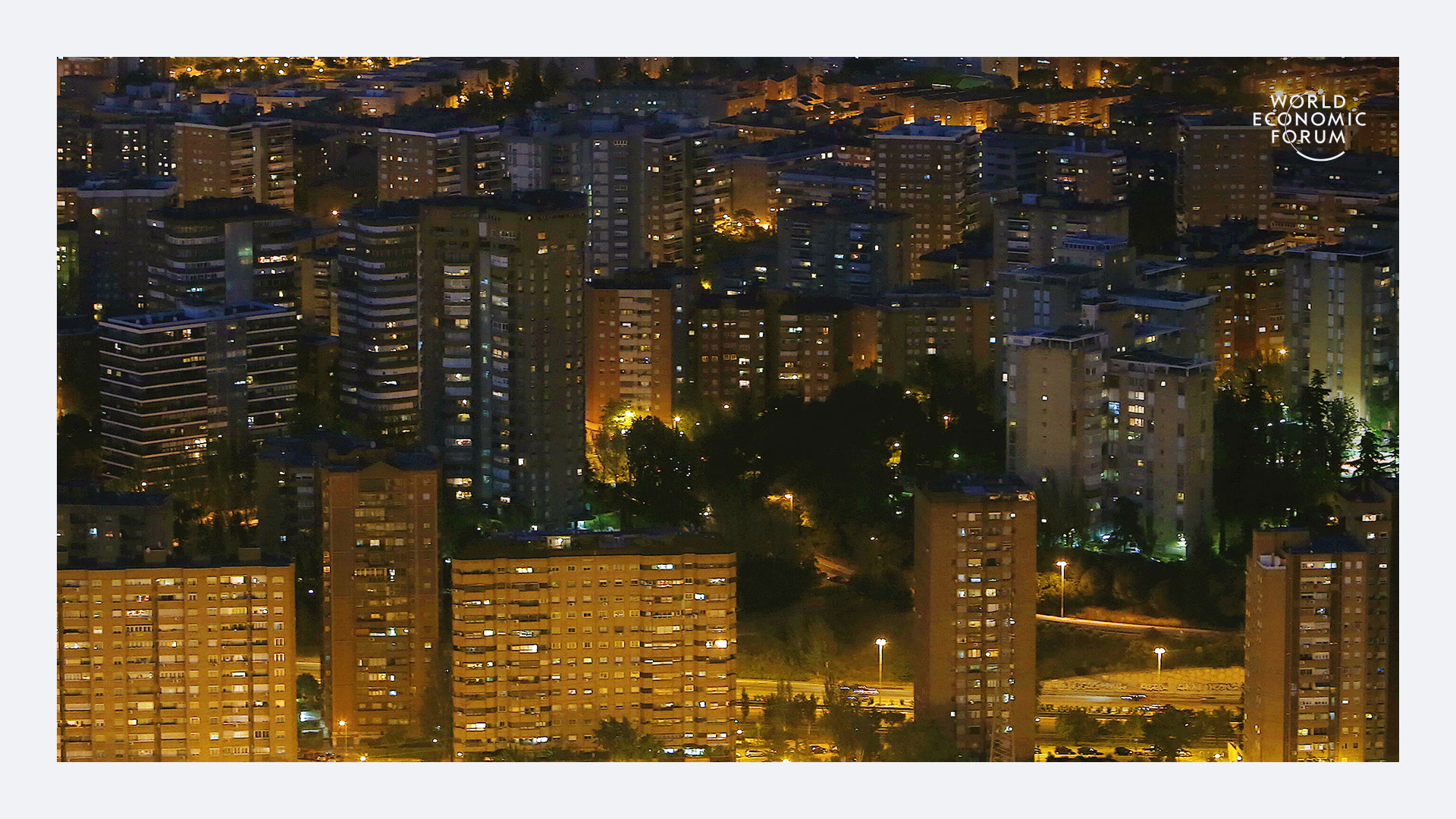This 'liquid window' harnesses light and heat to save energy in buildings

Energy-guzzling building account for 40% of global energy usage. Image: Today Online

Get involved with our crowdsourced digital platform to deliver impact at scale
Stay up to date:
Innovation
- Researchers at NTU have created a 'liquid glass' that can help reduce the energy consumption of buildings by up to 45%.
- The window uses a hydrogel-based liquid between glass panels and has taken 10 years to develop.
- The glass can help keep buildings cool by blocking out the sun and absorb heat to help keep buildings warm during the day to cut energy costs.
A newly developed "liquid window" can block sunlight to keep a building cool but also absorb heat to be gradually released during the day or night to cut energy costs, scientists said.
The window, invented by researchers at Nanyang Technological University, Singapore (NTU), uses a hydrogel-based liquid between glass panels and was found to reduce energy consumption in buildings by up to 45% compared to traditional glass windows.
It was also about 30% more energy-efficient than commercially available energy-efficient glass, as well as cheaper, said the NTU scientists who spent almost a decade on the project.
"Previously people only talked about blocking the sunlight in the summer and letting the sunlight come in in the winter, but nobody talked about heat storage - we're the first to do this," said lead researcher Long Yi.
The "liquid window" material can be used for small or large pieces of glass. "It's just like water," Long told the Thomson Reuters Foundation.
Energy-guzzling buildings, many of which are heated by fossil fuels, account for 40% of global energy usage, and windows are responsible for half of that energy consumption, according to a 2009 United Nations report.
The International Energy Agency said direct and indirect planet-warming emissions from electricity and commercial heat used in buildings rose to their highest recorded level in 2019, accounting for 28% of global energy-related CO2 emissions.

The increase was partly fuelled by growing energy demand for heating and cooling, with rising air-conditioner ownership and extreme weather, the agency noted in a 2020 report.
Conventional energy-saving windows are made with expensive coatings that cut down infra-red light passing in or out of a building, helping reduce demand for heating and cooling.
But they do not regulate visible light, a major component of sunlight that causes buildings to heat up.
To overcome the limitations, the NTU researchers mixed micro-hydrogel, water and a stabiliser, finding it can effectively reduce energy consumption in a variety of climates as it automatically responds to changes in temperature.
The liquid mixture in the "smart window" turns opaque or frosted in appearance when exposed to heat, blocking sunlight.
When temperatures cool, it returns to its original clear, transparent state, letting in light and heat.
NTU scientists conducted simulations using building models and weather data from Shanghai, Las Vegas, Riyadh and Singapore, as well as outdoor tests in Singapore, Guangzhou and Beijing.
They hope to start working with businesses soon to spark commercial interest.
The windows, most suited to office buildings that are occupied during the day, can be adapted for different locations.
But they are most effective in the tropics and places where temperatures rise during the day and fall sharply at night, such as the Middle East, said Long.
Tests also suggested the smart liquid window reduces noise 15% more effectively than double-glazed windows.
Don't miss any update on this topic
Create a free account and access your personalized content collection with our latest publications and analyses.
License and Republishing
World Economic Forum articles may be republished in accordance with the Creative Commons Attribution-NonCommercial-NoDerivatives 4.0 International Public License, and in accordance with our Terms of Use.
The views expressed in this article are those of the author alone and not the World Economic Forum.
Related topics:
The Agenda Weekly
A weekly update of the most important issues driving the global agenda
You can unsubscribe at any time using the link in our emails. For more details, review our privacy policy.
More on Energy TransitionSee all
Robin Pomeroy and Sophia Akram
April 26, 2024
Liam Coleman
April 25, 2024
Tarek Sultan
April 24, 2024
Jennifer Holmgren
April 23, 2024






